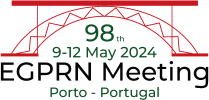Supporting evidence-based decisions for clinical practice of general practitioners by updated guideline recommendations
Annick Nonneman, Simon Van Cauwenbergh, Leen De Coninck, Jérôme Wagon, Evelyne Vanhoof, Paul Van Royen
Keywords: Practice guidelines, primary care, literature surveillance, Methodology
Background:
Clinical practice guidelines (CPGs) play a crucial role in integrating scientific evidence into healthcare decision-making. The Belgian working group WOREL (Working group development of primary care guidelines) has published 24 mostly interdisciplinary CPGs, in which General Practitioners (GPs) are always included. Approximately 20% of these guidelines appear to be out of date after 3 years, or even earlier. Therefore, updated recommendations reflecting new evidence are necessary to ensure their relevance for primary care. Literature surveillance is a key factor in this process.
Research questions:
How was the methodology of literature surveillance for CPGs implemented and what was the impact on the updating of recommendations and guidelines?
Method:
WOREL works with two partners to ensure the literature surveillance: one is the Belgian Center for pharmacotherapeutic information for primary care; the other is an online journal for Evidence-Based Practice that publishes pre-appraised studies for primary care. WOREL’s monitoring is based on a systematic screening of a list of predefined sources (Big five journals, drug bulletins, guidelines producers, journal clubs ), search strings in databases and evidence alerts. This provides an automated process for the identification of newly published evidence.
Results:
The literature surveillance process is depicted in a flowchart that covers a publication period from October to November 2023. The chart reports the following results for each step: in total 286 relevant articles for the 24 guidelines; 64 relevant for the clinical questions and recommendations; 12 articles confirm recommendations, 10 articles are assessed with a moderate or high level of newsworthiness.
Additionally, the flowchart outlines decision points and actions to be taken.
Conclusions:
The optimisation of evidence-based decision-making in primary care through up-to-date recommendations should be achieved through an effective and sustainable process of continuous monitoring of the literature. A flowchart, such as the one proposed here, can serve as a valuable framework for conducting literature surveillance.
Points for discussion:
The proposed methodology still has to be tested in practice. Our experiences will be shared with the scientific community. While we discussed and elaborated this methodology some important for the questions were already raised:
How to further implement and adapt this methodology for updating guideline recommendations?
Same or alternative experiences in other countries?
#176

